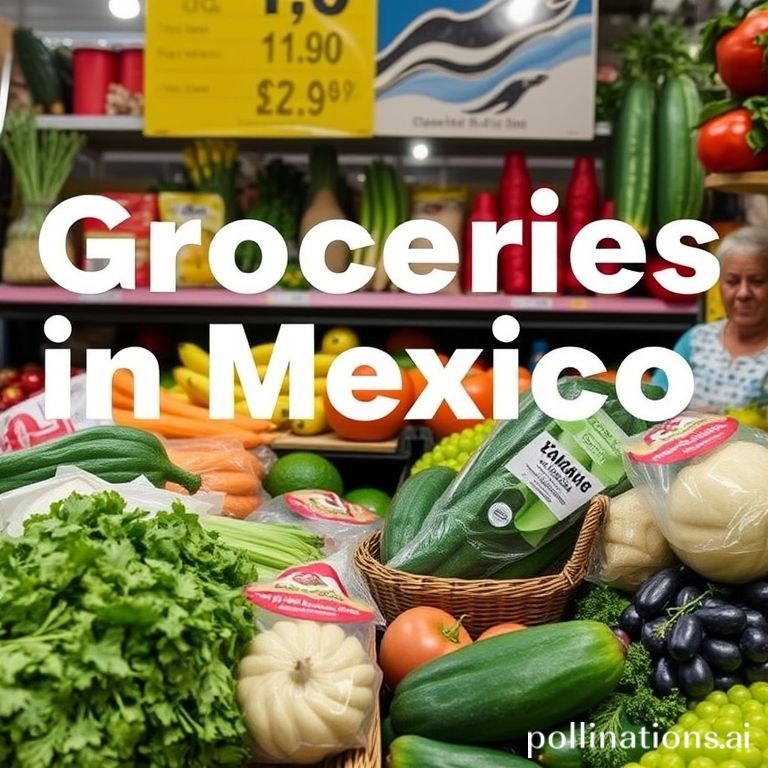Planning a trip to Mexico or considering a more permanent move? One of the biggest factors in budgeting for your life in Mexico is understanding the cost of groceries. While Mexico is often touted as an affordable destination, grocery prices can vary significantly depending on location, shopping habits, and the types of products you prefer. This guide will provide a detailed overview of what you can expect to pay for groceries in Mexico in 2025, helping you plan your budget with confidence.
From bustling city markets to modern supermarkets, we’ll explore the average costs of common food items, discuss strategies for saving money, and offer insights into the regional variations that can impact your grocery bill. Get ready to navigate the world of Mexican groceries like a local!
Average Grocery Costs in Mexico (2025)
Predicting exact prices for 2025 is impossible, but we can project based on current trends and inflation. Generally, expect to pay less for fresh produce, locally sourced goods, and traditional Mexican staples compared to imported items and processed foods. Here’s a breakdown of average costs for common grocery items:
- Fruits and Vegetables: Avocados ($1-3/kg), Tomatoes ($0.50-1.50/kg), Onions ($0.40-1/kg), Mangoes ($1-3/kg depending on season), Bananas ($0.50-1/kg). These prices are significantly lower than in many Western countries, especially if you buy from local markets.
- Meat and Poultry: Chicken breast ($3-5/kg), Ground beef ($4-7/kg), Pork ($3-6/kg). Meat prices can be comparable to, or slightly lower than, those in the US or Canada, depending on the cut and quality.
- Dairy and Eggs: Milk ($0.80-1.20/liter), Eggs ($1.50-3/dozen), Cheese (local) ($4-8/kg). Dairy can be more expensive in some areas, particularly for imported cheeses.
- Grains and Staples: Rice ($0.80-1.50/kg), Beans ($1-2/kg), Tortillas ($0.50-1/kg). These are the cornerstones of the Mexican diet and are incredibly affordable.
- Other Items: Bread ($1-3/loaf), Coffee ($5-10/kg), Bottled water ($0.50-1/liter).
Regional Price Variations
Grocery prices in Mexico can vary dramatically depending on the region. Tourist hotspots like Cancun or Puerto Vallarta often have higher prices due to increased demand and reliance on imported goods. Conversely, smaller towns and cities in states like Oaxaca or Chiapas generally offer lower prices, especially at local markets. Consider these regional differences when budgeting:
- Major Cities (Mexico City, Guadalajara, Monterrey): Expect slightly higher prices than the national average, especially in upscale supermarkets.
- Coastal Tourist Areas (Cancun, Playa del Carmen, Puerto Vallarta): The highest prices, particularly for imported goods and convenience items.
- Inland Towns and Cities (Oaxaca, San Cristobal de las Casas): The most affordable options, especially when shopping at local markets (“mercados”).
Where to Shop for Groceries in Mexico
Choosing the right place to shop is crucial for saving money on groceries. Here’s a breakdown of common shopping options:
Supermarkets
Chains like Walmart (Walmex), Soriana, and Chedraui offer a wide variety of products, including imported goods. Prices are generally higher than at local markets, but they offer convenience and a wider selection. They also frequently have sales and promotions.
Local Markets (“Mercados”)
These are the heart of Mexican commerce and offer the freshest produce at the lowest prices. You can also find local specialties, meats, and household goods. Bargaining is common, so don’t be afraid to negotiate!
Tiendas (Small Corner Stores)
These are ubiquitous in Mexico and offer basic necessities like milk, bread, and snacks. Prices are typically higher than supermarkets, but they are convenient for quick purchases.
Specialty Stores
These include butcher shops (“carnicerías”), bakeries (“panaderías”), and fruit and vegetable stands (“fruterías”). They often offer higher-quality products than supermarkets, although they may be slightly more expensive.
Tips for Saving Money on Groceries
Living affordably in Mexico involves adopting some smart shopping habits. Here are some proven tips:
- Shop at local markets: This is the single best way to save money on produce and local goods.
- Buy in season: Seasonal fruits and vegetables are cheaper and tastier.
- Cook at home: Eating out frequently can quickly drain your budget.
- Embrace local brands: Mexican brands are often cheaper and just as good as imported ones.
- Look for sales and promotions: Supermarkets often have weekly specials.
- Plan your meals: This helps you avoid impulse purchases and reduces food waste.
- Consider a local SIM card: Using apps to compare prices between stores can save you money.
Conclusion
Understanding the cost of groceries in Mexico is essential for budgeting and planning your life in this vibrant country. While prices can vary depending on location and shopping habits, by embracing local markets, cooking at home, and adopting savvy shopping strategies, you can enjoy a delicious and affordable lifestyle. This 2025 guide provides a solid foundation for navigating the Mexican grocery scene and making the most of your budget.
If you enjoyed this article, don’t forget to explore more inspiring stories on Life in Mexico!
IMAGE: A vibrant and colorful scene in a Mexican “mercado” (local market). Stalls are overflowing with fresh fruits and vegetables like mangoes, avocados, tomatoes, and chilies. Local vendors are interacting with customers. The mood is lively and bustling. Sunlight streams through the market, creating a warm and inviting atmosphere. The style is realistic and documentary-like.


